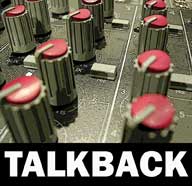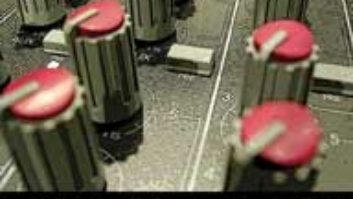
‘Cannon Re-Loaded’ Revisited
Thank you for the fine story on the new tribute album to the great Cannonball Adderley (July 2008, “Recording Notes: Cannon Re-Loaded”). I particularly enjoyed Chris J. Walker’s research into how this recording came together, even with the odds against it. It really shouldn’t be a surprise to anyone that fine musicians can pull off great music in one take. We should all strive to be as competent, regardless of genre. Using engineers who have the experience to pick mics for individual musicians makes the musicians comfortable and really accelerates a project.
Francesco Bonifazi
Editor’s note: On page 103, Cannonball Adderley was misidentified in the photo caption as George Duke. Mix regrets the error.
Radical Mixing Tales
In keeping with the theme of the August 2008 feature “Mixing Outside the Lines,” we asked readers to tell us about their own radical mixing techniques.
I was recently mixing Bandera Blanca when, well into the final analog mix, the band reminded me that the intro of the song was supposed to sound like you were hearing it “in the studio” until the drums kick in. What does “in the studio” sound like to the average listener (headphone leakage, talkback mic, open mic chatter, etc.) and how does one fake it when the complicated mix is nearly finished?
I took a mult of my stereo mix, summed it to mono, got it unbalanced and down to about instrument level. I sent this into one of those little 9-volt powered guitar amps that are built into a cigarette box and worked its input level for minimal distortion. I placed this on the ledge of my studio’s glass, miked it up with a pair of old Electro-Voice omnidirectional dynamics (a PL9 and a 635A) and clipped an old-school RCA BK-12A “lavalier” to the cigarette pack’s cover. I took these three tracks and recorded them along with the mix.
Later, I panned the omni mics wide in stereo, delayed one by a few milliseconds, time-corrected the lavalier, added an LPF to it and put it up the middle. Add a little crossfade where the intro meets the song and — voilá — instant studio vibe! The amp/mic combo’s lousy frequency response vaguely simulated both headphone leakage and a talkback mic, while the slap off the glass and room air from the omnis lent a lot of the realism.
Even though it was largely mono, the difference between the hard-panned, mismatched mics and the irregularity of the comb filtering off the glass lent it all some randomness and attitude that a plug-in would be hard pressed to keep up with. What fun!
Rob Tavaglione
atalyst Recording
Charlotte, N.C.
I’m comfortable mixing “in the box,” but occasionally I receive something that sounds really “digital” — the guitars are all recorded direct through some kind of pedal rig, the drums are from a sampler and everything is really thin and bright. When that happens, I push the mix through my Tube-Tech or ToneBuss summing amps, and I usually choose one to make everything sound more analog.
However, I recently had one project that just would not cooperate. I liked certain sounds better through one summing amp or the other, and some better in the box. So I used all three! I ran the bass and drums through the Tube-Tech, which really rounds out the samples and the bass. The bass also went through my ancient Altec compressor, which has only an on/off switch and a meter. All of the guitars went through the ToneBuss, which is pretty close to a ’60s-era Neve console as it uses the same transformers. Everything else sounded fine in the box so I left it. I also ran the drum bus — minus cymbals — out into my cutting room and ran a stereo pair of BLUE Woodpecker mics to add more room, and everything turned out great.
Randy Adams
Adamsound
Starting out as a one-man sound company, I found that growth meant that you would eventually find yourself in a venue larger than your system could handle. I learned a lot of tricks to safely run my system at its peak without blowing it up.
One was to boost a low frequency (say, 50 or 63 Hz) that sounded good in the room and then pull down most of the other low frequencies. You still had a good thump, but were using less power. I also cut the lower range of each speaker component: 40 Hz down on the lows, cut at 160 to 200 Hz on the mid-frequencies and cut a little of the 800 to 1k Hz area on the horns. That helped keep from pushing each component too much. I would sacrifice the lows in the kick a little and cut more lows out of the vocals than I would normally do. All of this reduced my overall signal with little noticeable loss in sound quality.
To keep from pushing my gains too much, I would route through a submaster and directly to the main out. This gave me more output with less gain at the input. With less gain, I was able to avoid clipping, even though I was running hotter than I liked. I was using a modified Seck studio board and ran the outputs at +10 on those occasions. The crossover had to be set carefully, as well. All of the amps would just bump the protect lights.
With the help of a little compression, I got away with this 10 or so times. Then I started buying bigger amps.
Ronald Smith
We’re gearing up for our October issue and for the 125th AES Convention, which takes place October 2 to 5, 2008, at the Moscone Center in San Francisco. Tell us about your favorite San Francisco music memory. E-mail us at [email protected].




